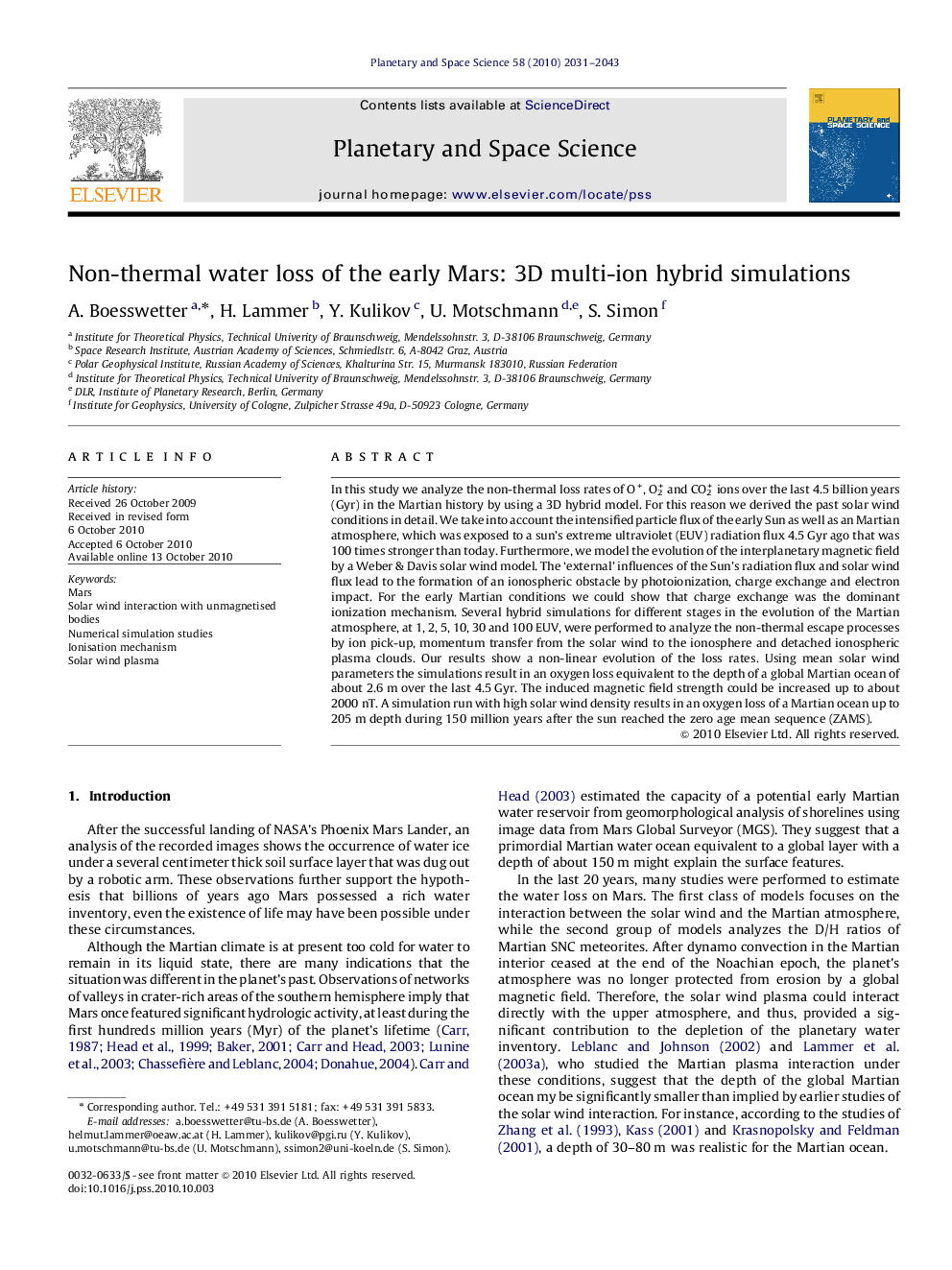| Article ID | Journal | Published Year | Pages | File Type |
|---|---|---|---|---|
| 1781663 | Planetary and Space Science | 2010 | 13 Pages |
Abstract
In this study we analyze the non-thermal loss rates of O+, O2+ and CO2+ ions over the last 4.5 billion years (Gyr) in the Martian history by using a 3D hybrid model. For this reason we derived the past solar wind conditions in detail. We take into account the intensified particle flux of the early Sun as well as an Martian atmosphere, which was exposed to a sun's extreme ultraviolet (EUV) radiation flux 4.5Â Gyr ago that was 100 times stronger than today. Furthermore, we model the evolution of the interplanetary magnetic field by a Weber & Davis solar wind model. The 'external' influences of the Sun's radiation flux and solar wind flux lead to the formation of an ionospheric obstacle by photoionization, charge exchange and electron impact. For the early Martian conditions we could show that charge exchange was the dominant ionization mechanism. Several hybrid simulations for different stages in the evolution of the Martian atmosphere, at 1, 2, 5, 10, 30 and 100Â EUV, were performed to analyze the non-thermal escape processes by ion pick-up, momentum transfer from the solar wind to the ionosphere and detached ionospheric plasma clouds. Our results show a non-linear evolution of the loss rates. Using mean solar wind parameters the simulations result in an oxygen loss equivalent to the depth of a global Martian ocean of about 2.6Â m over the last 4.5Â Gyr. The induced magnetic field strength could be increased up to about 2000Â nT. A simulation run with high solar wind density results in an oxygen loss of a Martian ocean up to 205Â m depth during 150 million years after the sun reached the zero age mean sequence (ZAMS).
Related Topics
Physical Sciences and Engineering
Earth and Planetary Sciences
Geophysics
Authors
A. Boesswetter, H. Lammer, Y. Kulikov, U. Motschmann, S. Simon,
